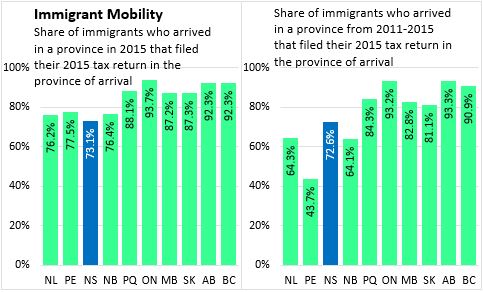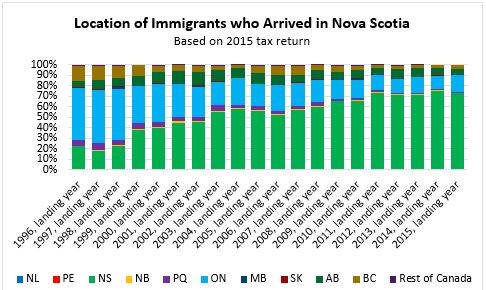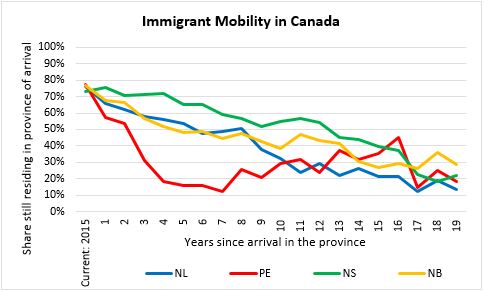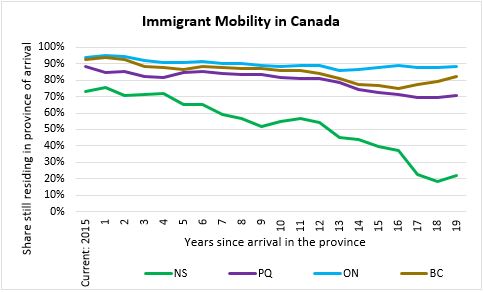The Economics and Statistics Division maintains archives of previous publications for accountability purposes, but makes no updates to keep these documents current with the latest data revisions from Statistics Canada. As a result, information in older documents may not be accurate. Please exercise caution when referring to older documents. For the latest information and historical data, please contact the individual listed to the right.
<--- Return to Archive
For additional information relating to this article, please contact:
November 27, 2017MOBILITY OF IMMIGRANTS WITHIN CANADA: 1996-2015 Statistics Canada has released tables from the Longitudinal Immigration Database on the wages and location of immigrants who arrived in Canada over the last 20 years (1996-2015). This data allows comparison of the number of immigrants who arrived in each province with their subsequent location, based on where they filed their income tax returns. 'Retention rate' in Statistics Canada's analysis refers to the proportion of tax filers that remained in their intended province of arrival, which can differ from their actual province of arrival.
This data showed that of immigrants who landed in Nova Scotia during 2015, 73.1 per cent were resident in Nova Scotia upon filing taxes. This is a higher retention rate than the share of immigrants who arrived in most previous years, though below the 75.4 per cent reported for 2014 arrivals.

Recent immigrant cohorts arriving in Nova Scotia are more likely to reside in the province in 2015. In each landing year since 2011, the share of immigrants who remained resident in Nova Scotia was over 70 per cent, peaking with 75.4 per cent of the 2014 cohort. Among those who arrived in Nova Scotia in the late 1990s, the majority (almost 80 per cent) reported 2015 residence in Ontario, Alberta, British Columbia and Quebec.

Across the country, the share of immigrants who remain in their province of arrival is highest in the larger urban provinces (Ontario, Quebec, British Columbia, Alberta) while the lowest portion of immigrants staying in their province of arrival are reported in Atlantic Canada.



Source: Statistics Canada CANSIM table 054-0003
<--- Return to Archive